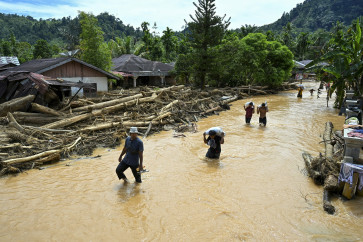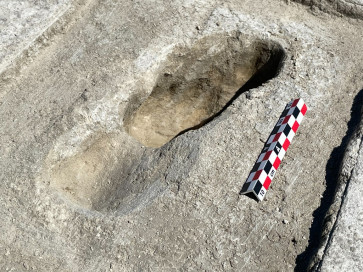Popular Reads
Top Results
Can't find what you're looking for?
View all search resultsPopular Reads
Top Results
Can't find what you're looking for?
View all search resultsIce Age footprints shed light on North America’s early humans
Change text size
Gift Premium Articles
to Anyone
 Making an impression: This picture released by Daron Duke, an archaeologist from the Far Western Anthropological Research Group, shows a footprint from the Ice Age discovered at an archaeological site in the southern Great Salt Lake Desert on the Utah Test and Training Range, about 80 miles west of Salt Lake City, on July 18. (AFP/Handout)
Making an impression: This picture released by Daron Duke, an archaeologist from the Far Western Anthropological Research Group, shows a footprint from the Ice Age discovered at an archaeological site in the southern Great Salt Lake Desert on the Utah Test and Training Range, about 80 miles west of Salt Lake City, on July 18. (AFP/Handout)
F
ootprints laid down by Ice Age hunter-gatherers and recently discovered in a United States desert are shedding new light on North America's earliest human inhabitants.
Dozens of fossilized prints found in dried-up riverbeds in the western state of Utah reveal more details about how the continent's original occupants lived more than 12,000 years ago — just as the frozen planet was starting to thaw.
The fossils could have remained unnoticed if not for a chance glance out of a moving car as researchers Daron Duke and Thomas Urban drove through Hill Air Force Base chatting about footprints.
"We were talking about, 'What would they look like?'" Duke told AFP. "And he said, 'Kind of like that out the window’."
What the men had found turned out to be 88 distinct prints left by a mixture of adults and children.
"They vary between just looking like discolored patches on the ground and [...] little pop-ups, little pieces of dirt around them or on them. But they look like footprints," Duke said.
The discovery was followed by a painstaking few days of very careful digging — with Duke sometimes lying on his belly — to ensure that what they were looking at was as old as it appeared.


















